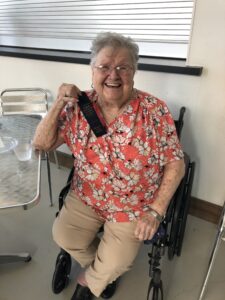The year was 1954 — Eisenhower was president, Elvis Presley released his first single, “That’s All Right”, New York Giants centerfielder Willie Mays made “The Catch” against the Cleveland Indians in the World Series, White Christmas topped the box office and a group of Lutherans decided to turn the recently deserted buildings of Clifton College into a “home for the aged”.
The very first residents moved into Clifton Lutheran Sunset Home on August 1, 1954. In the 70 years since, more than 6,000 residents (a conservative estimate) have called Lutheran Sunset Ministries Home – that’s roughly 3.5 times Clifton’s population in 1954!
“LSM in all of its forms has been an integral part of Clifton and Bosque County,” said President/CEO Rodney Rueter. “Generations of Central Texans have worked here. Kids grow up coming to sing Christmas carols to our residents, or stopping by to trick-or-treat on Halloween. It’s the support of our community that has allowed LSM to flourish over the last 70 years!”
Generous donors make it possible to grow our campus and add much-needed facilities. Volunteers raise money through hosting events like the Quilt Auction and running the Pot O’ Gold. They also are huge assets in keeping our residents busy and entertained with things like painting classes and concerts. Our board of directors helps us navigate challenges and plan for the future.
And most of all, throughout the years our incredible staff has gone above and beyond to care for our residents, from showing up to work on a tractor in 14-inch deep snow (a fond memory many had of one of LSM’s original RNs, Hattie Tyssen) to coming to work during scary and unprecedented events like the COVID-19 pandemic. It really does take a village, and we have the very best one.
“I think it’s a testament to the work we do that people who have donated to us for a long time, who have volunteered with us and who have worked here choose to make LSM their home when the time comes,” said Sunset Home Administrator Lance Allen. “It truly is neighbors taking care of neighbors in so many different ways and I think that’s what makes LSM so special.”



















